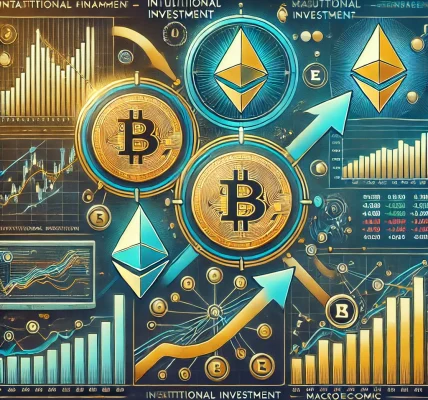The stock market has always been a dynamic, ever-evolving landscape. As we step into 2025, technology, investor behavior, and market forces are reshaping how stock market trading works. Understanding the key trends that will define the future of stock market trading can help investors stay ahead of the curve and make more informed decisions. In this blog, we will explore the most important trends to watch in 2025, providing insights into how they might impact your trading strategies.
1. Rise of AI and Machine Learning in Trading
Artificial Intelligence (AI) and Machine Learning (ML) are revolutionizing stock market trading by enabling faster, more accurate predictions. AI-powered algorithms are already capable of analyzing vast amounts of data in real-time, making decisions in milliseconds. In 2025, these technologies will continue to improve, leading to smarter trading strategies, automated decision-making, and enhanced risk management.
How AI Will Impact Trading:
- Algorithmic Trading: AI will continue to drive the rise of algorithmic trading, which can process huge volumes of data to identify profitable trading opportunities.
- Sentiment Analysis: AI will enable more accurate sentiment analysis by processing social media, news, and financial reports to predict market movements.
- Personalized Investment Strategies: Investors will see AI-powered robo-advisors offering personalized portfolios based on real-time data analysis and investor preferences.
2. Increased Adoption of Blockchain Technology
Blockchain technology, the underlying system behind cryptocurrencies like Bitcoin, is increasingly finding its way into the traditional stock market. In 2025, blockchain could play a significant role in streamlining stock trading by increasing transparency, reducing costs, and improving security.
Potential Blockchain Applications in Stock Trading:
- Decentralized Exchanges (DEX): Blockchain-based decentralized exchanges could offer a more secure, transparent alternative to traditional exchanges, reducing the risk of fraud and manipulation.
- Tokenization of Assets: Blockchain will enable the tokenization of traditional assets, allowing stocks, bonds, and real estate to be represented as digital tokens, offering more liquidity and fractional ownership.
- Smart Contracts: Automated contracts executed through blockchain can reduce settlement times and eliminate intermediaries, making transactions faster and more cost-effective.
3. The Growth of ESG Investing
Environmental, Social, and Governance (ESG) factors are becoming increasingly important to investors who want to make a positive impact while seeking returns. In 2025, we can expect ESG investing to grow even more as both retail and institutional investors prioritize companies that align with their values.
What to Expect from ESG Investing:
- Increased Regulatory Pressure: Governments and regulatory bodies will introduce more stringent guidelines for companies to disclose their ESG practices, making it easier for investors to assess companies based on sustainability and ethical practices.
- Rise in ESG-focused ETFs: Exchange-Traded Funds (ETFs) focused on ESG criteria will become more popular, offering investors a diversified way to invest in socially responsible companies.
- Sustainable Growth: Investors will increasingly seek companies that focus on sustainable practices, clean energy, and social responsibility, leading to a rise in green stocks and ethical investment funds.
4. Virtual and Augmented Reality for Enhanced Trading Experiences
Virtual Reality (VR) and Augmented Reality (AR) have the potential to change how investors interact with stock markets. By 2025, VR and AR technologies could offer immersive, interactive trading platforms, allowing investors to visualize data and trends in ways that are not possible today.
Potential VR and AR Applications in Trading:
- Immersive Trading Platforms: VR could provide virtual trading floors, allowing investors to interact with markets and view data in 3D spaces.
- Data Visualization: AR can help investors visualize stock charts, trends, and financial reports overlaid on the real world, providing a more intuitive and interactive experience.
- Remote Investing: VR and AR technologies will enable investors to feel more connected to the markets, even from the comfort of their homes, creating a more engaging trading experience.
5. Increased Use of Retail Investors and Social Trading Platforms
The retail investor market has seen explosive growth in recent years, driven by platforms like Robinhood, eToro, and Webull. In 2025, social trading will become even more prevalent, with new tools that allow retail investors to learn from and copy the strategies of successful traders.
The Future of Social Trading:
- Copy Trading: Social trading platforms will enable novice traders to mimic the trades of experienced investors, reducing the learning curve and increasing the accessibility of stock market investing.
- Community Insights: Investors will engage more with online communities and social media platforms to discuss trades, market trends, and share tips. These communities will play an essential role in shaping market sentiment.
- Gamification: Platforms will continue to gamify trading experiences to attract younger, tech-savvy investors, blending investment with entertainment.
6. High-Speed 5G Networks Enabling Real-Time Trading
The rollout of 5G technology will enhance trading by providing faster data speeds and lower latency, which are crucial for real-time stock market analysis and high-frequency trading. By 2025, 5G networks will allow traders to make split-second decisions with more reliable data transmission, reducing delays and improving trading outcomes.
How 5G Will Enhance Stock Market Trading:
- Faster Execution: High-frequency traders will benefit from faster execution of trades, reducing lag time and improving performance.
- Real-Time Data: Investors will have access to real-time financial data, news, and market updates, enabling them to make more informed decisions quickly.
- Mobile Trading: 5G will improve mobile trading experiences, allowing traders to make investment decisions on the go with minimal delays.
7. The Rise of Robo-Advisors
Robo-advisors are automated platforms that provide financial advice based on algorithms and data analysis. As we move into 2025, robo-advisors will become more advanced, offering customized portfolios based on personal financial goals, risk tolerance, and market conditions.
What to Expect from Robo-Advisors in 2025:
- Personalized Investment Advice: Robo-advisors will use AI and big data to provide increasingly tailored investment advice, considering a broader range of factors, including behavioral biases.
- Lower Fees: As technology advances, robo-advisors will continue to lower their fees, making them more accessible to a wider range of investors.
- Integration with Other Financial Services: Robo-advisors will integrate with other aspects of personal finance, offering a holistic approach to managing investments, savings, and budgeting.
Final Thoughts: The Future of Stock Market Trading in 2025
As we approach 2025, the stock market is on the verge of significant transformation. AI, blockchain, VR, and social trading platforms will all play a major role in shaping how investors buy, sell, and manage stocks. The increasing importance of ESG investing, the rise of retail investors, and advancements in technology will make stock market trading more accessible, faster, and more efficient than ever before.




